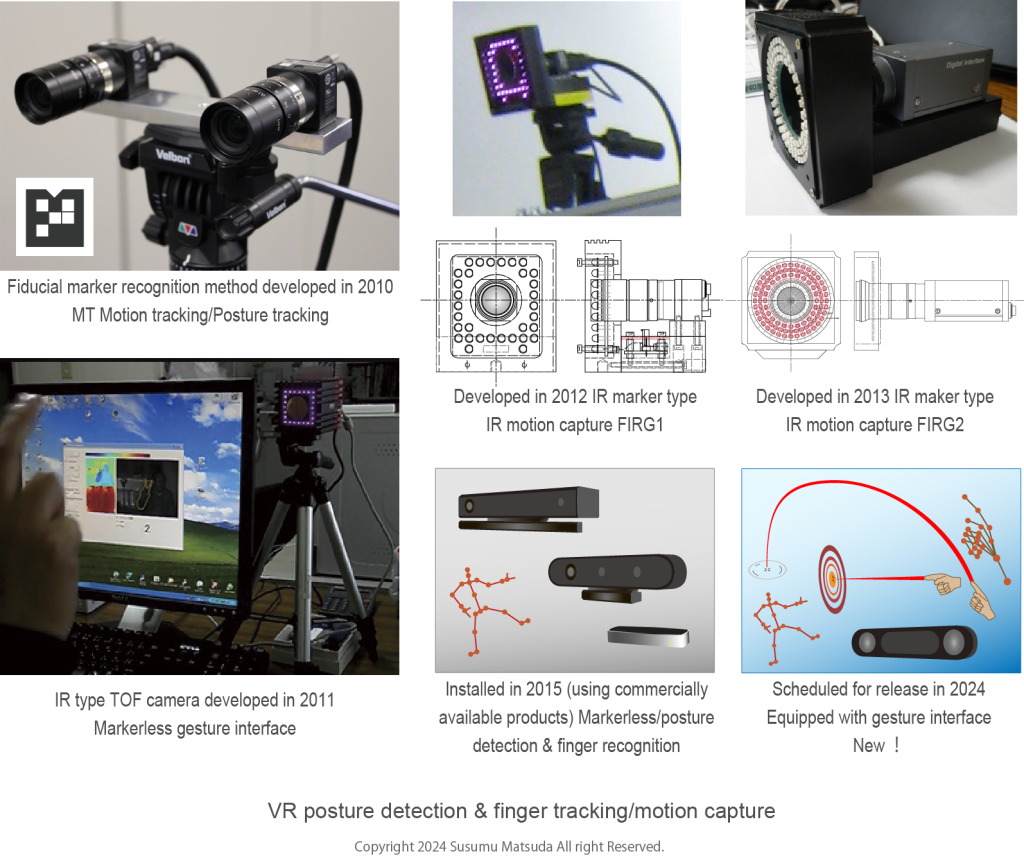The cost of introducing VR hardware is one of the hurdles for those who want to effectively utilize VR. Also, the controller operation that is mainstream in VR is not an easy operation method for everyone. In order to eliminate these obstacles, we have focused our efforts on developing a user interface that allows users to control the progress of the experience scenario through intuitive operations.

In 2010, we developed a system (9 stereo cameras in total) that detects the posture of the user’s whole body by attaching fiducial markers (geometrically defined patterns) to the body. In 2011, we will develop a marker-less gesture interface using a depth detection camera using the infrared TOF (Time of Flight) method. It was a highly robust gesture interface that detected each finger and read the shape of the hand by extracting features using a unique algorithm, but the cost of the TOF camera used was a major obstacle. In 2012, we will develop and realize a classic IR motion tracker using infrared reflective markers at low cost. This IR marker type motion tracker was adopted and used in a VR screen system developed for a research institution in 2012. In 2015, we began using a commercially available stereo depth sensor developed for game consoles to incorporate marker-less full-body posture detection and hand tracking functionality using an infrared stereo camera into our products. Although it took a long time, it will be commercialized in 2024 with intuitive operation using a VR controller-less and marker-less gesture interface using the camera of VR goggles.